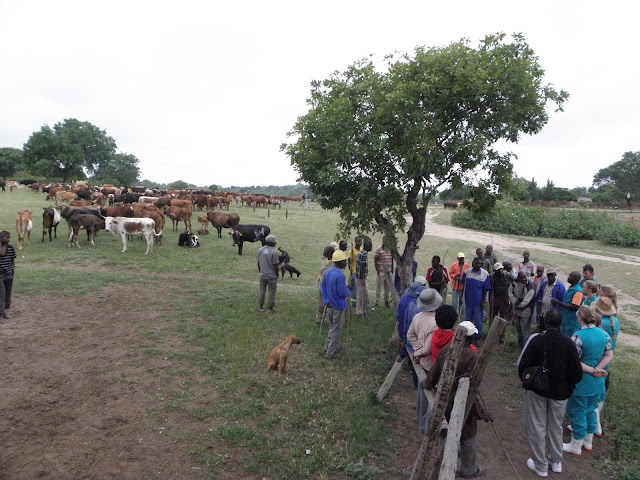By Dr Sikhumbuzo A Mabunda
I am sure my
fans must have been wondering if I am still alive, well rest assured I have
survived. After the “eye opening” day yesterday with Home Based Care Workers
and the reptile park we went on to learn more about the interaction between Humans
- Domestic animals - Wild animals. This unfortunately came at a prize, a huge
prize! We had to be on the road from 04:30 am, just to go see cows being
dipped! i Yho yho yho!
Dr Greg Simpson (the
Veterinary doctor) had 5 veterinary students with him, 3 final years from the
University of Pretoria (Onderstepoort) and 2 were third year students from the
Netherlands. As much as we don’t often think about it, there are lots of
diseases transmitted between humans and animals (whether wild or domestic),
these are therefore grounds for Public Health Medicine to partner up with
veterinary medicine using a public health approach in addressing ill health
arising from this interaction.
Just like Human
Health promoters, the veterinaries also address farmers to educate and prevent
ill health either to the animals or to humans. We then experienced the cattle
being inspected, calves being tattoed, wounds cleaned, blood drawn from both
the neck and tail of a cow and Fidele even auscaltated a cow.
We then moved to
the Hluvukani clinic to show the veterinary students the setup of a Primary
Care Health Centre and the possible challenges experienced.
After this we
then went to the Hluvukani Animal Health Clinic to meet Lucy (the 3 legged calf
with “failure to thrive”/ also abandoned). We had a tour of their operating
theatres and pharmaceutical area. We had a lecture from Dr Greg to
contextualise the importance of these two professions working together in the
promotion of wellbeing.
Quality Assurance (QA)
At 11:30am when we got to Tintswalo hospital
for the QA talk we were already into our 8th hour of our working
day. We were impressed with how well this man (Mr Peter Ngobeni) understands
the health system and the challenges the hospital faces. He also knows the
weaknesses and strengths of the methodologies used to measure the Domains and
Priority areas from the National Core Standards (NCS).
It was so
emotional for all of us to say our goodbye to Thembi our hostess and the Wits
Rural Health organiser. She has really excelled and was very accommodating and
understanding.
 |
| We met the cattle herders and farmers at 6:00 in deep rural Mpumalanga. It was amazing to see everyone so early and so organized so far off the beaten track. |
 |
| Greg Simpson meeting with the farmers |
 |
| Veterinary students first catching and then weighing and tagging the calfs - something like a mini rodeo |
University of Pretoria Veterinary School:
http://web.up.ac.za/default.asp?ipkCategoryID=50
http://web.up.ac.za/default.asp?ipkCategoryID=50
Tintswalo hospital:
http://www.tintswalohospital.org/














































